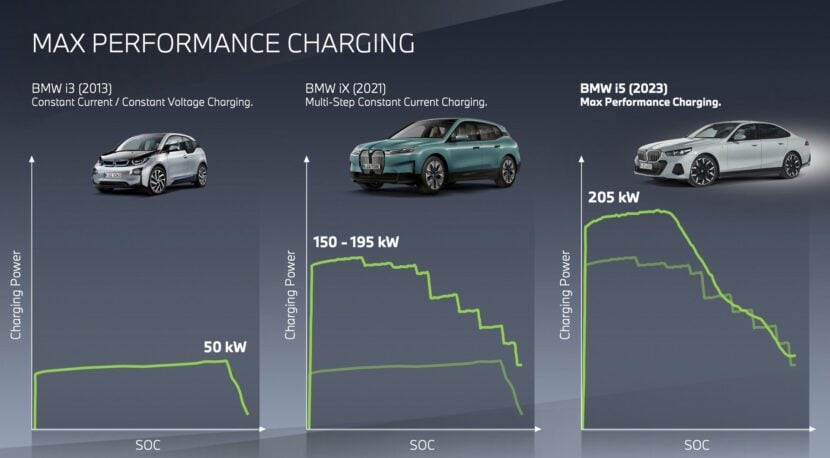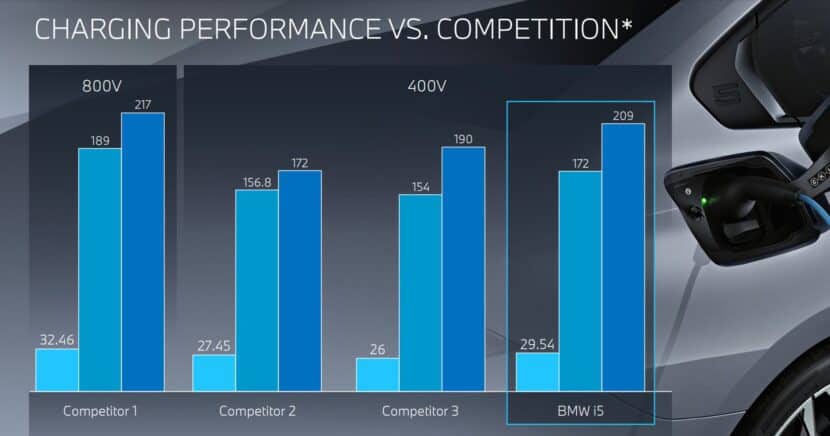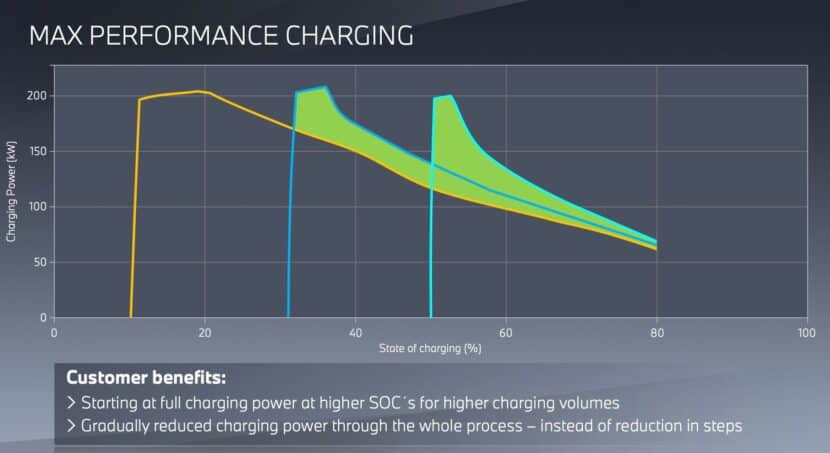BMW has had electric vehicles on the market for well over a decade. In that time, they’ve taken obvious and significant steps forward in areas like design, performance, and tech. One of the most important factors when considering an electric car is charging. And while battery size is certainly important, charging and how an EV deploys its charge is just as – if not more – critical. Luckily, we recently got some insight into just how these EVs use their power. And especially, we will explain the power and charging curve in the new BMW i5 eDrive40 and i5 M60.
Max Performance Charging
The 2013 BMW i3 utilized constant current charging. Essentially, this allowed the i3 to charge steadily at one constant rate. Until roughly 80 percent SOC (state of charge), the i3 charges at just 50 kW, as opposed to the iX, which starts off at 150-195 kW. The iX uses a stepped approach that slowly steps down the charge flow as the SOC increases – peak charge flow happens around 20-30 percent before dropping off.
The i5 (and, sources indicate, i4 eDrive40 drivers that received the OTA update in March) takes things one step further. The maximum charge speed of 205 kW happens near 30-40 percent, then gradually tapers instead of sharply falling off at charging checkpoints. The result is a more predictable and even charge time, ultimately benefiting drivers.
One remarkable feature of the i5 is its departure from a fixed charging power versus state of charge (SOC) curve. Instead of commencing charging at a set rate, regardless of the SOC starting point, the i5 permits near-peak charging power right from the start. For example, when charging a battery that’s half-empty (with an SOC of 50%), rather than beginning at a 120kW rate, the i5 enables a robust 200kW at the outset, gradually tapering down from there.
It’s likely that the iX and the i7 will get a similar charging curve in the future as well.
Charging vs. the Competition
When it comes to charging and the competition, BMW leads the pack – at least when it comes to vehicles with 400-volt charging. Vehicles like the Porsche Taycan can still charge much quicker than BMW EVs, restoring significantly more charge faster overall. Despite the 400-volt charging limitations, the i5 still comes very close to rivaling 800-volt rivals. In 10 minutes, the i5 restores 29.54 kWh of power – the 800-volt rival restored about 10 percent more over the same interval. The gap remains mostly consistent when measuring average charging performance and maximum charging performance.
Interestingly, roughly that same 10 percent separates the BMW i5 from other EVs that use 400-volt charging. In 10 minutes, rivals restored 27.45 and 26 kWh, while the i5 brought in 29.54. BMW measured average charging performance to be 156.8 and 154 kW in competitors – the i5 managed 172 kW. Max charging capped out at 172 kW and 190 kW for others, while the i5 dominated with 209 kW.
Driving Modes Matter
When ‘driving modes’ were introduced long ago, many people thought they were gimmicky. Or, were quite sure that they didn’t really do anything. This is not the case with the latest batch of BMW EVs. For example, in Personal Mode, the i5 eDrive40 makes a maximum of 230 kW (around 308 horsepower). In more aggressive modes like Sport Mode, you can unleash the full 250 kW.
Your current speed factors in, too. Boost and Sport mode deliver a jolt of power, starting from around 60 km/h. It stands to reason that the quicker you drive, the more energy can be recuperated by the system. On the i5 eDrive40, max recuperation is 120 kW and around 175 km/h (108 mph). Driving modes have a real, tangible effect on the vehicle’s performance.



